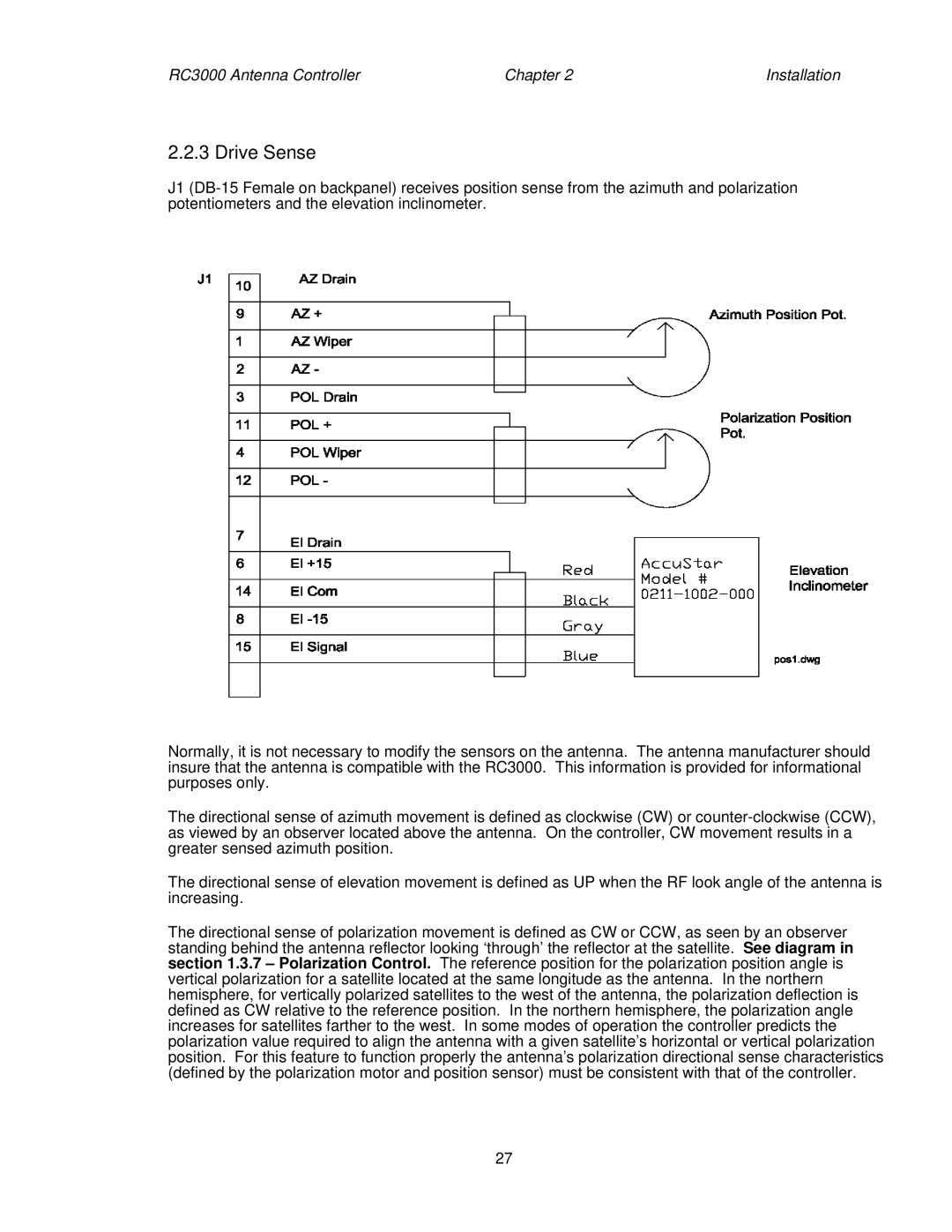
RC3000 Antenna Controller | Chapter 2 | Installation |
2.2.3 Drive Sense
J1
Normally, it is not necessary to modify the sensors on the antenna. The antenna manufacturer should insure that the antenna is compatible with the RC3000. This information is provided for informational purposes only.
The directional sense of azimuth movement is defined as clockwise (CW) or
The directional sense of elevation movement is defined as UP when the RF look angle of the antenna is increasing.
The directional sense of polarization movement is defined as CW or CCW, as seen by an observer standing behind the antenna reflector looking ‘through’ the reflector at the satellite. See diagram in section 1.3.7 – Polarization Control. The reference position for the polarization position angle is vertical polarization for a satellite located at the same longitude as the antenna. In the northern hemisphere, for vertically polarized satellites to the west of the antenna, the polarization deflection is defined as CW relative to the reference position. In the northern hemisphere, the polarization angle increases for satellites farther to the west. In some modes of operation the controller predicts the polarization value required to align the antenna with a given satellite’s horizontal or vertical polarization position. For this feature to function properly the antenna’s polarization directional sense characteristics (defined by the polarization motor and position sensor) must be consistent with that of the controller.
27
